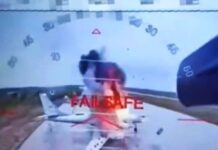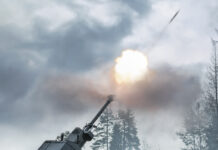If there has been one constant in the War in Ukraine, it is that trends often do not stay fixed for long. In last month’s editorial, I noted that the front lines had moved relatively slowly in the opening portion of 2025. Yet as no sooner had that gone to print, than the pace of Russia’s advances picked up significantly, with their forces securing noteworthy gains over the month of May. Similarly, some previously apparent equipment shortages, such as Russia’s difficulties with maintaining older aircraft, appear to have been at least partially resolved through their greater use of more modern aircraft. Indeed, according to Ukrainian accounts, the current trend is that more modern equipment is trickling into service for both sides.
In terms of major battlefield developments, at the time of writing in late May, a Russian force reported at approximately 50,000 strong appears to be in the opening phase of pushing into Ukraine’s Sumy oblast in the North of the country. The opening up of the Sumy axis as a direction for advance would presumably be aimed at forcing Ukraine to redirect forces from other fronts to defend this area. Ironically, this is a reversal of the position Ukraine established in early August 2024, when its forces launched their incursion from Sumy into Russia’s neighbouring Kursk oblast.
On the Eastern front, Russia’s main offensive efforts are gradually progressing toward the partial encirclement of Pokrovsk and Myrnohrad on the one side, and Konstantivinka on the other. This has been a fairly slow process, but appears to now be gathering some momentum following Russia’s push toward Popiv Yar. Having said that, in some areas progress has remained slow; a case in point is Chasiv Yar, where Russian forces are only now beginning to make gains despite having captured portions of the town months before.
In the aerial domain, Russia has demonstrated its ability to scale up its attacks quite substantially, launching an estimated 273 one-way attack (OWA) unmanned aerial vehicles (UAVs) at Ukraine on 18 May 2025, at the time the largest attack of the war. This record was short-lived, as on 25 May, Russia launched a much larger attack comprising an estimated 367 OWA UAVs and missiles. For more insight into how Russia has managed to scale up its strikes, see the article on p18 of this issue.
On the political front, the pessimism expressed regarding Russia’s seriousness about peace talks appears to have been justified thus far. Despite numerous announcements from the Kremlin that Russia is willing to negotiate, just about the only thing Russia and Ukraine have managed to agree on so far is a prisoner swap. Moreover, starting peace talks would only be the first hurdle to overcome, with later stages presenting plenty of scope for delays, cancellations, or walking back offers. Even if an agreement is reached, that is no guarantee it will last. Ukraine is quite justifiably distrustful of an agreement which is not backed by security guarantees from external powers; Russia in turn is keen to avoid such an agreement coming to pass.
Unfortunately for Ukraine, its seems Russia may be able to make the US leadership lose interest in peace talks by simply continuing to do what it is already doing. In April 2025, US Vice President JD Vance told reporters: “We’ve issued a very explicit proposal to both the Russians and the Ukrainians, and it’s time for them to either say ‘yes’ or for the United States to walk away from this process”.
Developments since then have not given particular cause for optimism that this position may change. As a case in point, following Russia’s 25 May attack, US President Donald Trump took the chance to chastise Russian President Vladimir Putin’s attack; yet at the very same time, Trump also found a way to criticise Ukraine’s President Zelenskyy.
There has been hope that Europe would step up its support to offset the US’ waning enthusiasm, but the results so far have been somewhat uninspiring. While Europe has continued to provide aid, the numbers thus far in 2025 have been lower than through much of 2023 and 2024. Germany’s newly-appointed Chancellor Friedrich Merz has stated on 28 May that there were “no longer” any range restrictions on German-supplied weapons to Ukraine, notionally allowing Kyiv to use these to strike targets in Russia. Merz also said Germany would assist Ukraine with producing long-range weapons. However, neither development is expected to move the needle all that much; not least because Ukraine has long since been using a plethora of domestically-produced long-range OWA UAVs to successfully strike targets in Russia.
Having said that, there may be some cause for optimism. Europe is very much at the beginning of a long process of transition, with 2025 forecast to be the first year Europe out-spends the US on defence since World War II. As the continent begins to modernise its capabilities and replenish stockpiles, the level of support which it is politically, economically, and industrially feasible to give Ukraine may expand in a corresponding manner. The core concern, however, is that by then it may be too little, too late.
Mark Cazalet















